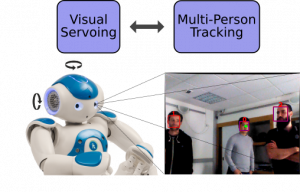Tracking a Varying Number of People with a Visually-Controlled Robotic Head
Y.Ban, X. Alameda-Pineda, F. Badeig, S. Ba, and R. Horaud
IEEE/RSJ International Conference on Intelligent Robots and Systems (IROS’17)
Novel Technology Paper Award Finalist
PDF | Abstract | | Slides | Results | Acknowledgements
| Slides | Results | Acknowledgements
Results on the NAO-MPVS Dataset (More results available on this page)
Acknowledgement
Funding from the European Union FP7 ERC Advanced Grant VHIA (#340113) is greatly acknowledged.

